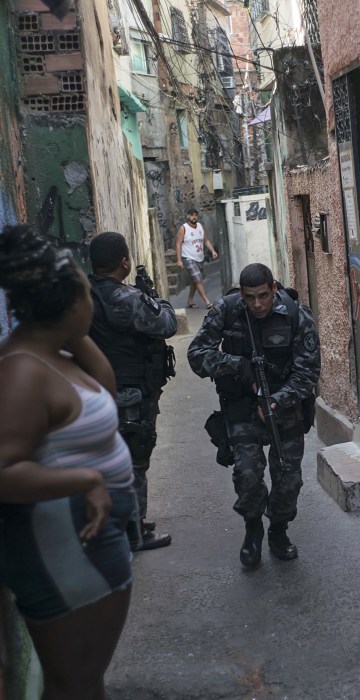
Photo
Gangs and Police Battle for Control of Rio's Slums
Not far from Rio's posh Ipanema and Copacabana districts, narrow pathways lead to grim slums where drug gangs dominate life for residents.
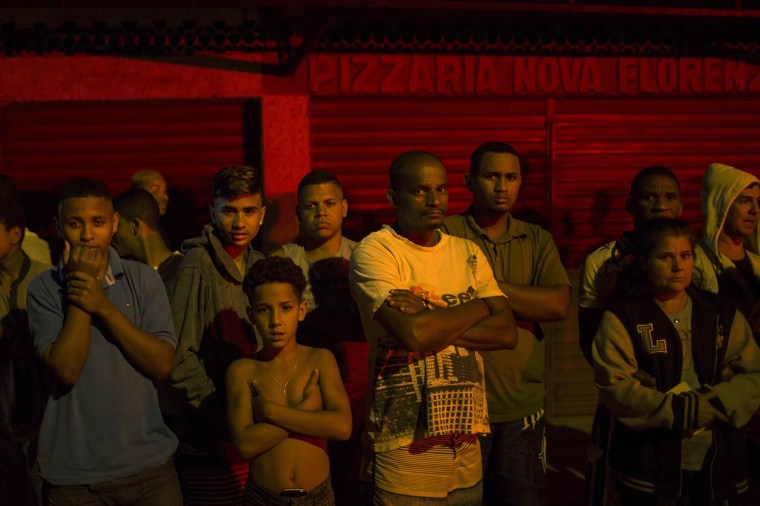
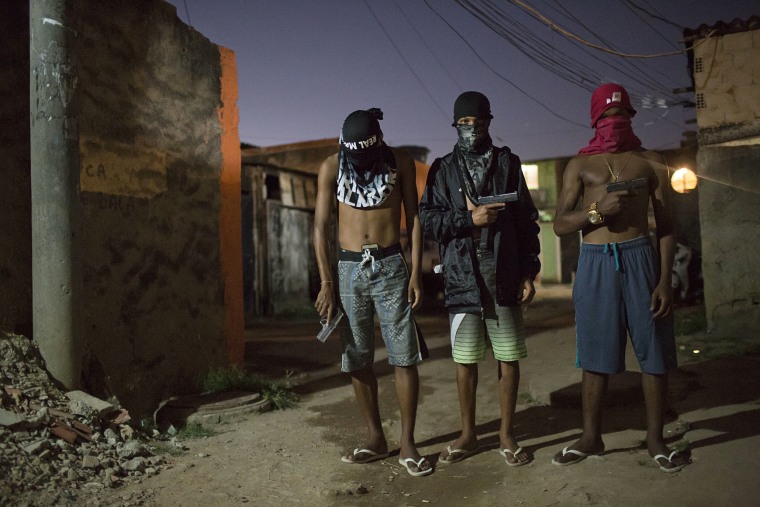
Young drug traffickers pose for photos
Young drug traffickers pose for photos holding their guns in a slum in Rio de Janeiro, Brazil. When Associated Press journalists visit areas with authorization from the gangs, the ones who agree to be photographed cover their faces so they can't be identified.
Scenes of impunity and violence play out daily in many of Rio's hundreds of slums, known here as favelas, and other outlying areas. The vast majority of killings are the result of heavily armed gangs who frequently shoot it out in turf wars.
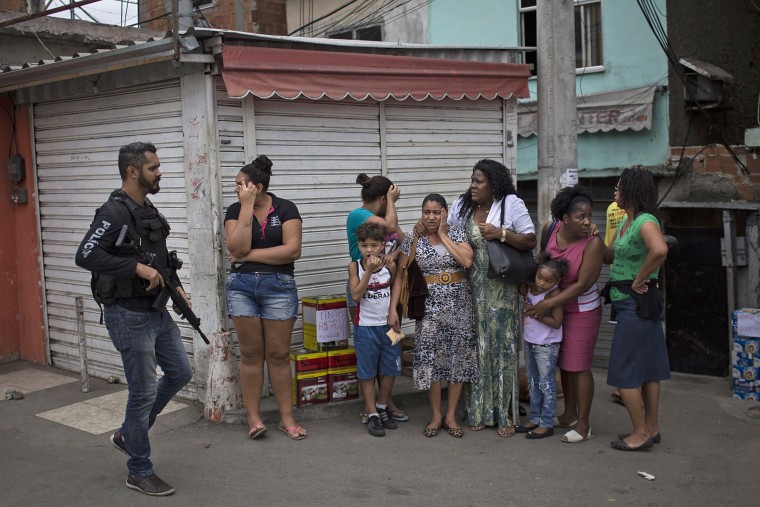
A police officer walks past residents
A police officer walks past residents during a clash with drug traffickers in the "pacified" Alemao slum complex in Rio de Janeiro on July 7.
Tourists coming for the Olympic Games will likely be spared from the violence lived daily in slums in the west, north and outlying areas of the city. The 85,000 soldiers and police who will be dispatched represent a force double that of the 2012 Games in London.

A body lies at the entrance of a home
A body lies at the entrance of a home in Nova Iguacu, greater Rio de Janeiro, on July 13. The man who lived there with his family was removed by gunmen and killed on the spot. Police believe the killing was a gang hit related to a change of leadership in the area.
On the eve of hosting the world's largest sporting event, Rio's decade-long push to curb violence in hundreds of slums appears to be crumbling. Overall murders are on the rise in the first half of 2016.


A police officer patrols among residents during an operation against drug traffickers at the "pacified" Jacarezinho slum in Rio de Janeiro on June 29.
The Pacification Police Units, known by the Portuguese acronym UPP, were created in 2008, setting up community stations in at-risk areas, mostly near sports venues, posh tourist districts and downtown. A drug gang leader called the program a "facade." He said that drug dealers were initially worried and kept a low profile, but soon it was back to business as usual.

A police officer photographs the body of homicide victim Aga Lopes Pinheiro, a pre-candidate for local council in Mage, in greater Rio de Janeiro, Brazil.
According to local news reports, the 49-year-old woman was shot by four gunmen while in a bar with a friend and her partner. The woman is the 11th politician murdered in the greater Rio area since November, and police have not been able to determine the motives for the killings.
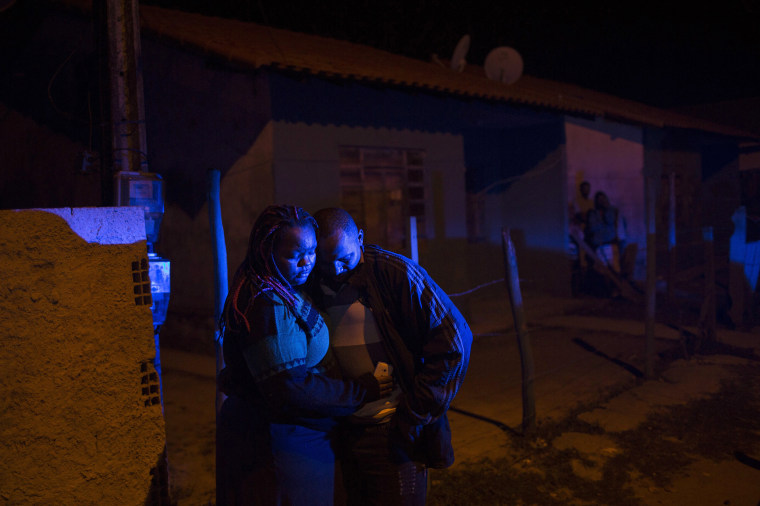
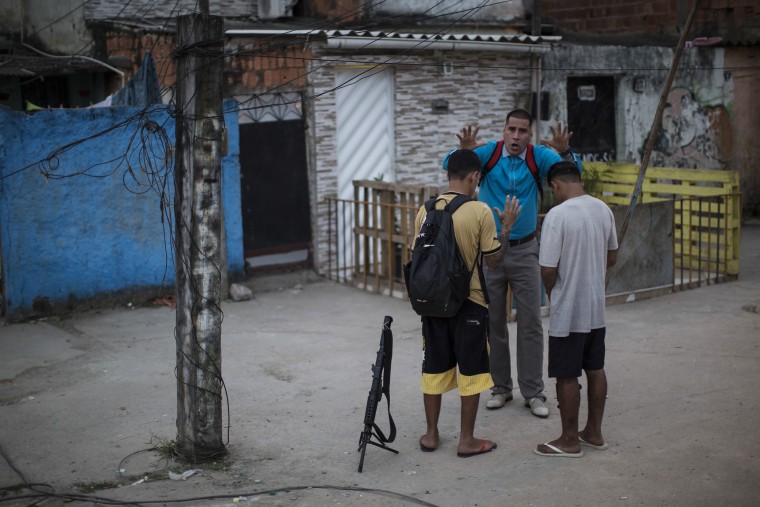

The body of a teenage boy who was killed while walking outside of his home turf lies on a street in a gang-controlled area of Rio on June 30. Later in the day, according to residents, the father went to denounce his son's death to the gang and was shot dead.
Overall murders are on the rise in the first half of 2016, say officials, and the victims are overwhelmingly young, black men.
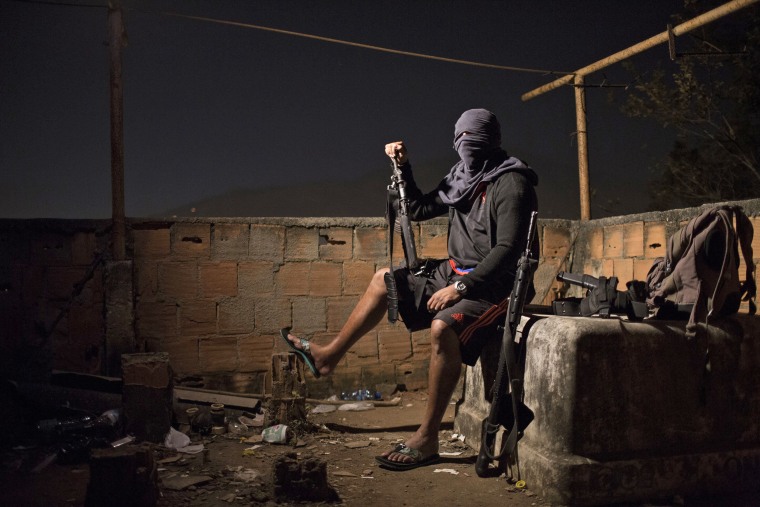
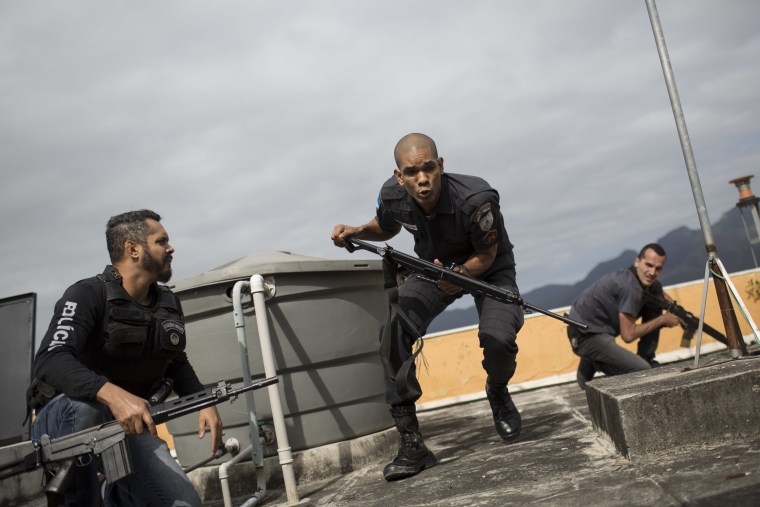
A police officer runs for cover during an exchange of gunfire with drug traffickers at the "pacified" Alemao slum in Rio on July 7. Half a dozen officers had entrenched themselves behind a cable car station while they shot it out with suspected drug traffickers in the sprawling cluster of slums in north Rio.
Shootouts erupt daily, even in slums where community policing programs had successfully rewritten the narrative in recent years.